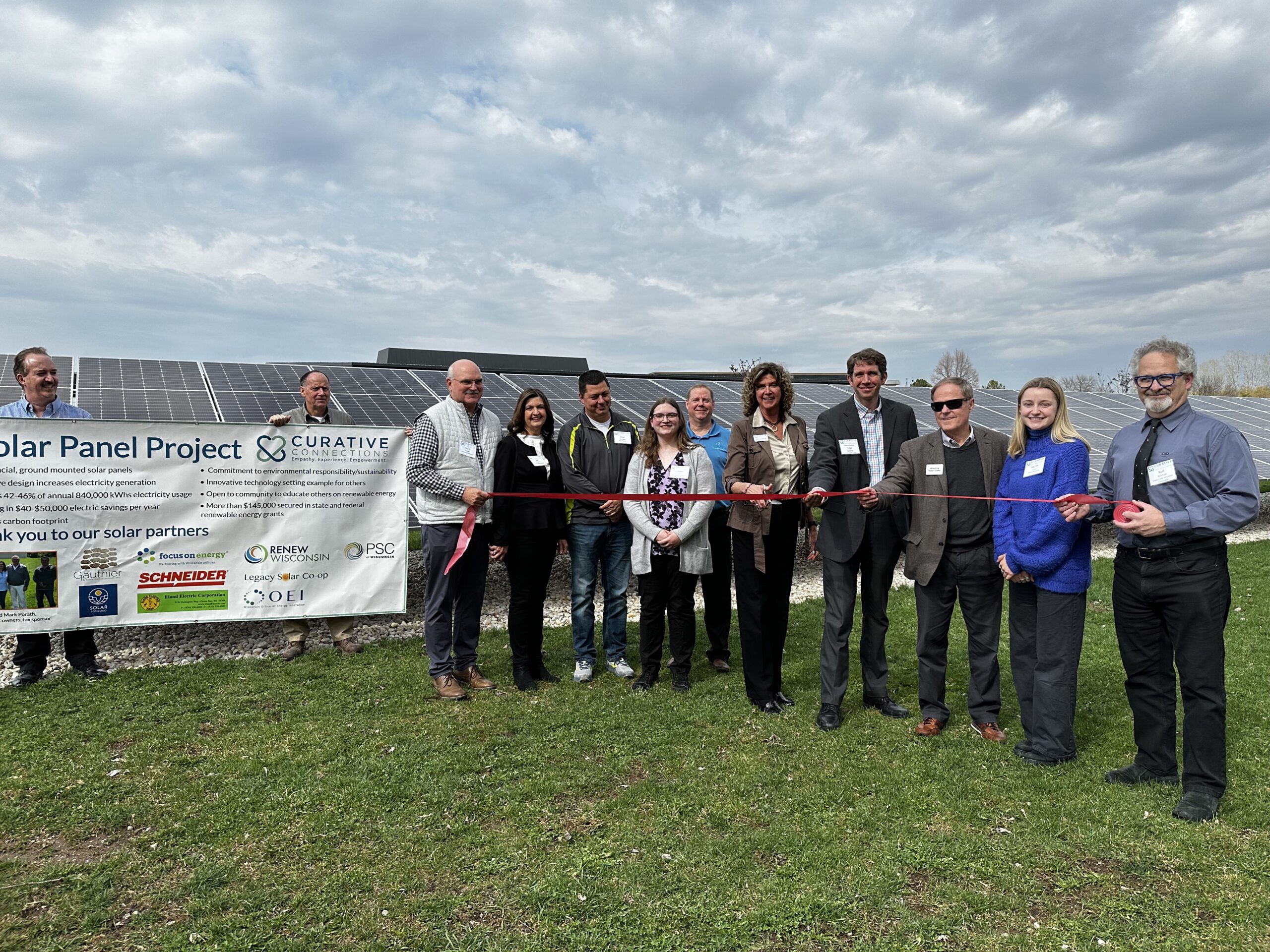
by Lauren Cohen | Apr 24, 2023 | Press Release, Solar, Solar for Good
On Thursday, April 20, Curative Connections held a ceremony dedicated to their new 280-kilowatt solar array. Curative Connections aims to help people reach their goals for independence by providing essential services to older adults and those with disabilities.
This solar system was installed by Eland Electric and is projected to offset 42-46% of the organization’s electricity usage. “We had a great experience with this project, from design and engineering all the way to commissioning,” said Jesse Michalski, Project Manager at Eland Electric. “This project was a little unique in that we had limited space and were trying to maximize the energy output of a solar array, and through the use of bi-facial modules, we were able to achieve a design that fits the customer’s goals.”
The economic implications of this array for Curative Connections are wide-reaching. The newly installed solar array is projected to bring the organization $50,000 of annual savings. “As a nonprofit, this is critical as we can now redirect these savings to support for our programs and the thousands of members
we serve each year,” said Jeanne Stangel, President and CEO of Curative Connections.
This solar installation is momentous as the organization celebrates an impressive milestone. “Curative Connections is proud to cut the ribbon on our solar project as it shines light upon another reason to celebrate our 75th anniversary year,” continued Stangel.
The project was funded largely by a $125,000 Office of Energy Innovation grant and financial support from Focus on Energy. Curative Connections also received a $10,000 grant from Solar for Good, a RENEW Wisconsin program run in partnership with the Couillard Solar Foundation.
“This solar project is a testament to the power of partnership between mission-driven nonprofits and clean energy advocates,” said Lauren Cohen, Program Coordinator with RENEW Wisconsin. “Solar for Good’s success is a direct result of organizations like Curative Connections leading the way towards a more sustainable future for Wisconsin and beyond.”
In addition to their grant funding, Curative Connections worked with Legacy Solar Cooperative to partner with a tax sponsor to take advantage of tax credits, which were not yet available to nonprofit organizations at the time of installation.
“We are grateful for the support we received from foundations, federal and state grants, and community partners,” continued Stangel. “This is a collaborative effort of a commitment to environmental responsibility and sustainability.”
With 75 years of serving the public under their belt, the money saved from this solar installation will allow Curative Connections to continue its mission to ensure that everyone receives the care they deserve. This project demonstrates the organization’s commitment to this mission and the environment, which others can look to and hopefully be inspired to embark on a similar path.
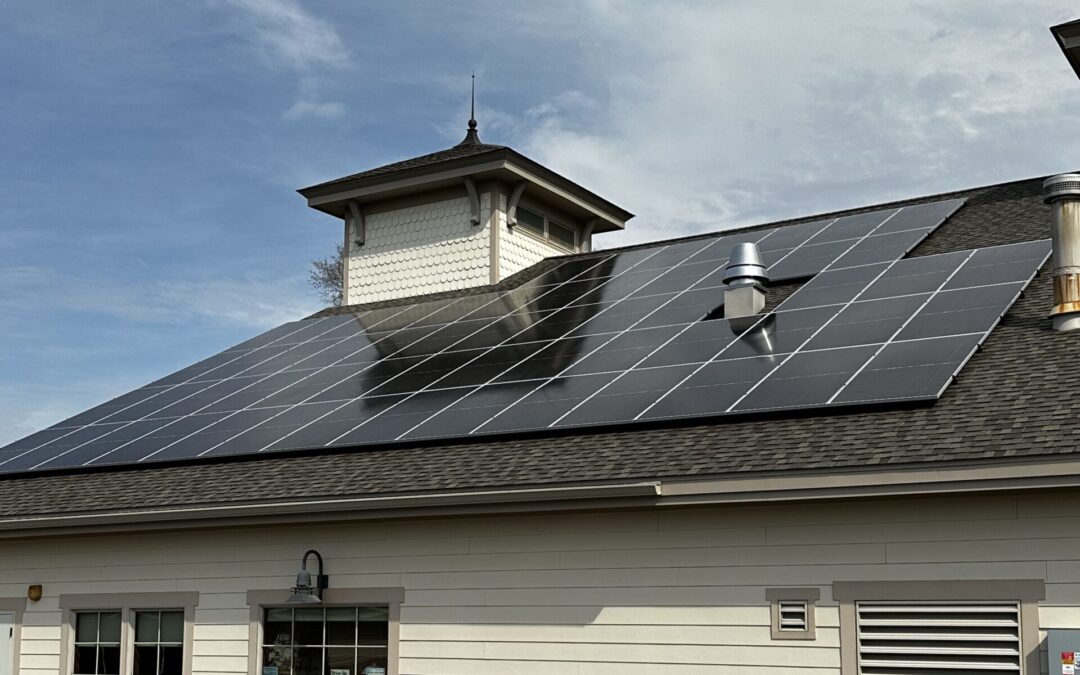
by Lauren Cohen | Apr 17, 2023 | Press Release, Solar, Solar for Good
On Saturday, April 15, the Shirley M. Wright Memorial Library held a solar dedication ceremony for their 32-kilowatt, newly constructed solar array. Scenically located on the Mississippi River and the bluffs of the Driftless Region, the Shirley M. Wright Memorial Library is dedicated to serving the rural communities of Trempealeau by offering free and equitable access to lifelong learning and enrichment.
The project, installed by Ethos Green Power, consists of 60 solar panels and is projected to offset 100% of the library’s electric needs. “This investment will save thousands in tax dollars that can be repurposed for other community needs,” said Alicia Leinberger of Ethos Green Power Cooperative. “In just a few years, the savings will offset the initial investment, providing decades of free electricity harvesting sunshine on the library roof.”
The library received over $83,000 in grants and incentives to install this solar array. Among these, the Shirley M. Wright Memorial Library received an EBSCO Solar Grant, a program that funds library solar installations.
The Shirley M. Wright Memorial Library was also awarded a panel grant from Solar for Good, an initiative provided by RENEW Wisconsin and the Couillard Solar Foundation to expand solar power within the state. The grant provided 30 of the 60 solar modules necessary for the project. “The solar grants and incentives we received will help the library purchase less power generated by fossil fuels, allowing our library to be financially and environmentally sustainable, all while acting as a catalyst to inspire change in the community,” said Jessica Schoonover, Library Director.
The library has laid out several opportunities for the community to interact with and be inspired by this solar array. “The very visible solar panels and the monitoring available on the website make it easy for the public to get curious,” continued Leinberger.
This solar installation will be an example to the Trempealeau community, showing its residents the economic and environmental benefits of adopting sustainable practices. It is just one aspect of a new initiative the library is adopting called SWML Renew, aimed at beginning sustainable, energy-conserving changes to its footprint. “We are working on doing our part to develop, model, educate, and encourage our community to live mindfully of our environment,” continued Schoonover. “We hope to encourage our neighbors to consider energy-efficient ways they can Renew their homes and businesses to make a more resilient future for Trempealeau.”
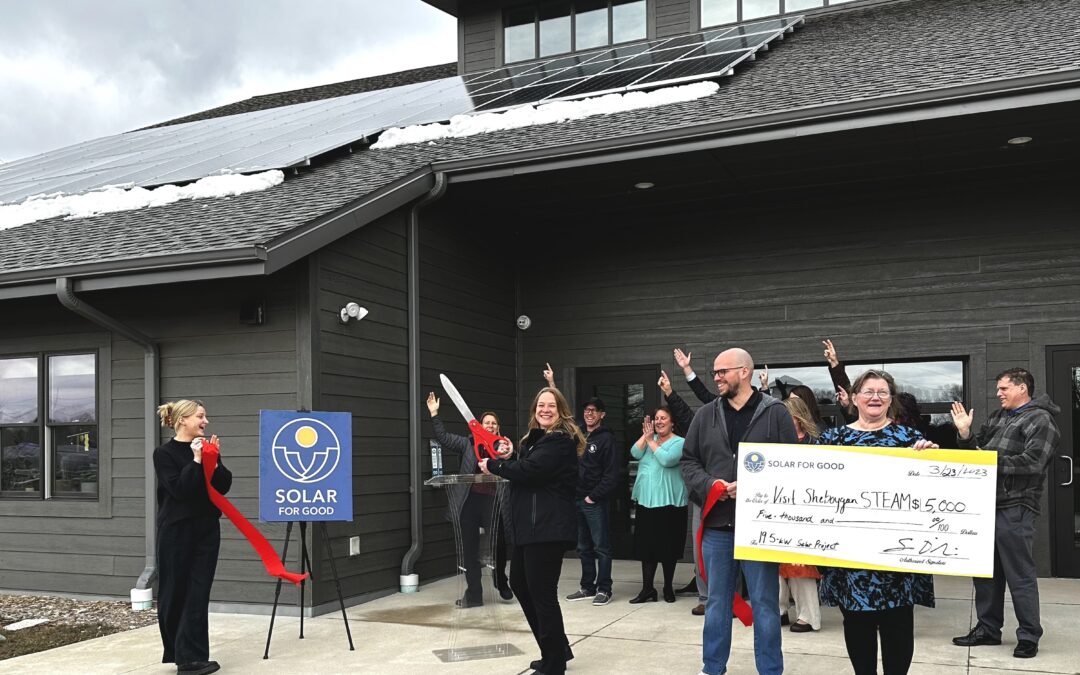
by Lauren Cohen | Mar 24, 2023 | Solar, Solar for Good
On Thursday, March 23, Visit Sheboygan STEAM held a ribbon-cutting ceremony for their 19.5-kilowatt solar array. Visit Sheboygan STEAM is a nonprofit organization that provides innovative science, technology, and urban ecology education.
The project, installed by Arch Solar, consists of 52 solar panels and is projected to offset approximately 28% of the building’s electrical needs and 56% of Visit Sheboygan STEAM’s production. “We had a blast working with Visit Sheboygan STEAM on their solar installation,” said Andrew Holmstrom at Arch Solar. “Installing on such a river-visible location, in downtown Sheboygan, meant a lot of Arch.”
Visit Sheboygan STEAM’s provides environmental and urban ecology education, and those involved with the STEAM program are excited by the solar installation’s educational opportunities. “The mission of our organization includes environmentally focused STEAM education, and this project will help us facilitate a new line of programming featuring photovoltaics and renewable energy,” said Kathy Cannistra, Program Developer at Visit Sheboygan STEAM.
As a popular destination among locals and tourists, Visit Sheboygan STEAM’s solar installation is a role model for similar organizations to follow in their footsteps. “All of Sheboygan County is in the early adoption stages of solar, so influential organizations paving the way are crucial in its development,” continued Holmstrom. “As time goes on, and the STEAM program grows, we’re looking forward to getting involved and providing education to the leaders of tomorrow on clean energy.”
This project was primarily funded by the organization’s existing donor base and business sponsors. In addition, RENEW Wisconsin’s Solar for Good program provided Visit Sheboygan STEAM with a $5,000 grant to assist with the upfront cost of the solar array.
“Environmental stewardship and education are core to our mission,” continued Cannistra. “Therefore, we are thrilled that this solar project has helped reduce the energy-related costs of our STEAM (Science, Technology, Engineering, Art, Math) programming while simultaneously demonstrating that solar power can be effective in our climate and region.”
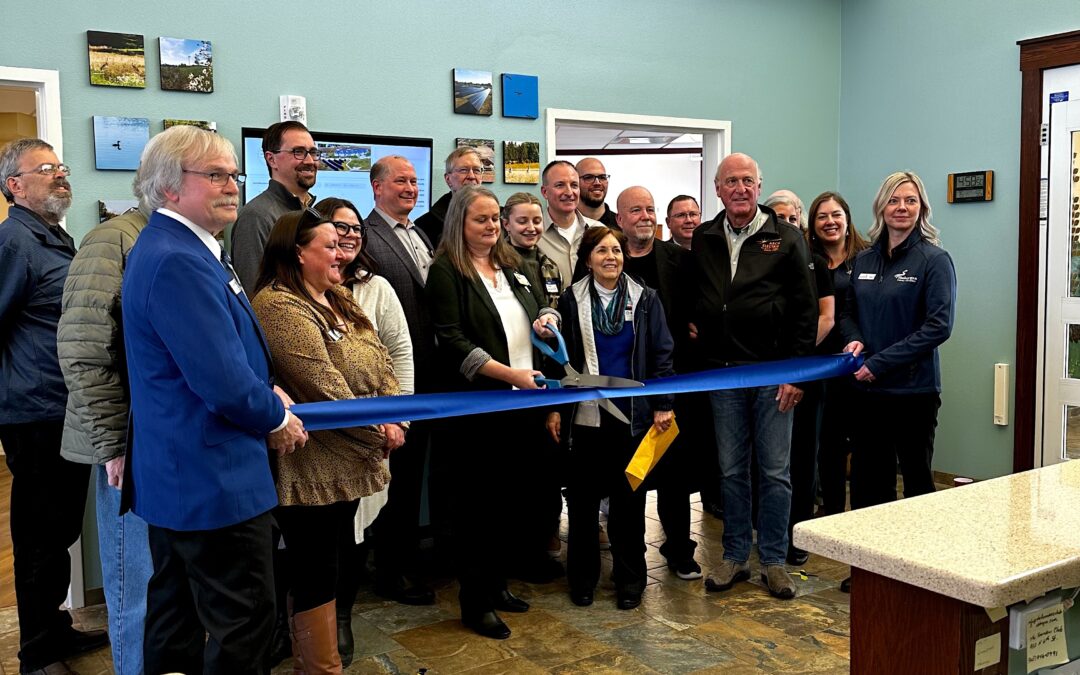
by Lauren Cohen | Mar 22, 2023 | Solar, Solar for Good
On Tuesday, March 21, Sheboygan Senior Community (SSC), Inc. held a solar dedication ceremony for their 198-kilowatt, newly constructed solar array. Sheboygan Senior Community is a faith-based, nonprofit continuum of care facility providing respite, short-term rehab, assisted living, skilled nursing, and end-of-life services.
The project, installed by Arch Electric, consists of 448 solar panels and will produce roughly 267,000 kWh of annual energy. It is projected to offset over 28% of the organization’s current consumption. Unlike many other solar projects, Sheboygan Senior Community’s array was installed as a ground mount on approximately 1.5 acres.
“What sets the Sheboygan Senior Community Project apart from any other commercial solar project in Wisconsin is the battery or energy storage system,” says Keith Conway, Energy Consultant at Arch Solar. “This system is designed to shave peak demand charges from the utility, thus reducing their monthly electric bill. The SSC is setting an example of what is possible to the rest of the state.”
This project was brought to fruition largely due to a generous commercial benefactor, who provided 95% of the funding for the senior community’s project. The organization worked with Legacy Solar Cooperative to secure this funding. By using a private investor, they were able to utilize the 26% Investment Tax Credit which was unavailable to not-for-profit organizations before the passage of the Inflation Reduction Act.
“Legacy Solar Cooperative has been very pleased to work with everyone on this wonderful project. It does indeed take a village,” says Tony Hartman, Director of Business Development at Legacy Solar Cooperative. “SSC’s leadership team especially made this project a joy, from start to finish, showing consideration for their neighbors as well as campus residents.” In addition to facilitating the financial arrangement, the cooperative provided consulting services, education, and outreach assistance.
The Sheboygan Senior Community also received a panel grant from RENEW Wisconsin’s Solar for Good program. The grant provided 150 of the 448 solar modules necessary for the project. “SSC, Wisconsin’s Office of Energy Innovation Grant Program, the Couillard Solar Foundation, Arch Solar, and key local support brought this fantastic clean energy and battery project to life, demonstrating patience through the pandemic period,” continued Hartman.
“Renewable energy is not only the right thing to do for the environment and our community, but it provides SSC with the opportunity to enjoy substantially lower utility bills for years to come,” says Stephanie Goetz, Director of Operations at Sheboygan Senior Community. “These savings will go towards expanding our campus to continue filling the needs in our community for senior living services. Our hope is that our Solar for Seniors project can be used as an example for other healthcare nonprofit organizations.”
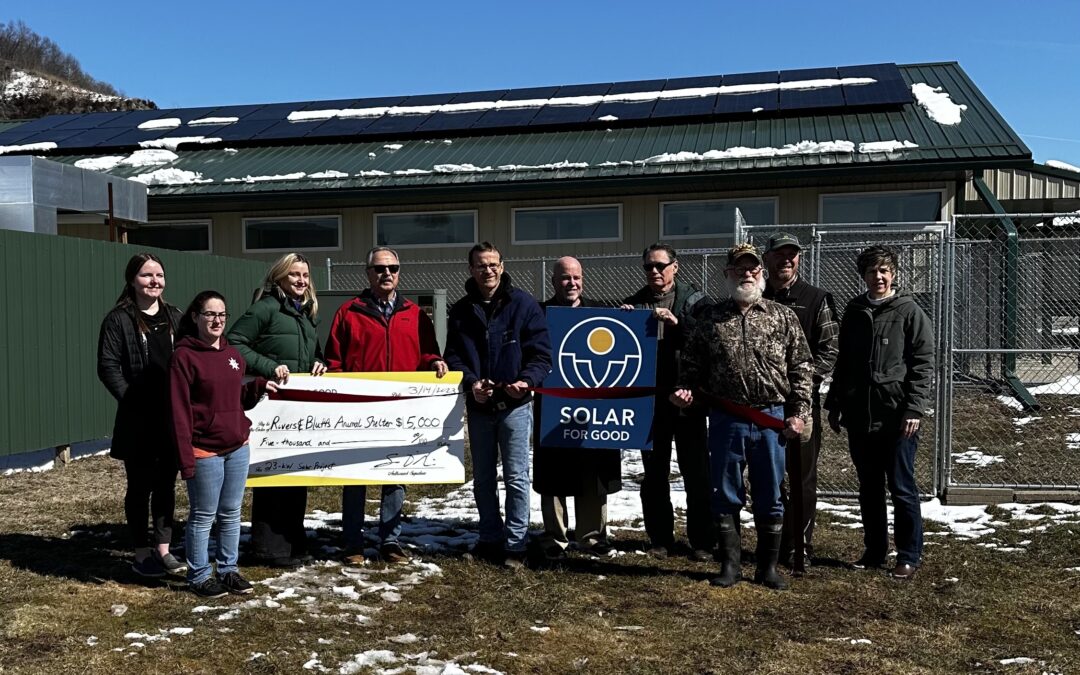
by Lauren Cohen | Mar 20, 2023 | Solar, Solar for Good
On Tuesday, March 14th, Rivers and Bluffs Animal Shelter held a ribbon cutting ceremony for their 23-kilowatt, newly constructed solar array. Rivers and Bluffs Animal Shelter is a non-for-profit organization that provides quality care for companion animals in need and educates the community about responsible pet ownership.
The project, installed by Olson Solar, consists of 54 solar panels and will produce over 24,000 kWh of annual energy. It is projected to offset approximately 97% of the animal shelter’s consumption.
This project marked Olson Solar’s first array to be installed on an animal shelter. “With an expected lifespan of 35-40 years, their system will produce more than $100,000 in energy savings,” said Michael Palen of Olson Solar Energy. “The clean renewable energy produced by their system is equivalent to saving over 46,000 gallons of gas!”
The decision to invest in the future of their shelter with solar was made possible due to a generous donation made in late 2021. This donation, coupled with the shelter’s continued increases in energy consumption, presented an opportune time to “go solar”.
“Anything we can do to reduce our operating costs is an example to all who support us that we are doing our part by investing wisely in our animal shelter,” said David Ralph, board member of Rivers and Bluffs Animal Shelter.
In addition to the donation, RENEW Wisconsin’s Solar for Good program provided Rivers and Bluffs Animal Shelter with a $5,000 grant to assist with the upfront costs of the solar array. The project also received funding assistance through Focus on Energy incentives.
“Renewable energy projects like these can be a huge help to the community,” said Sam Dunaiski, Executive Director of RENEW Wisconsin. “Rivers and Bluffs will be able to take the money saved on their utility bills and immediately redirect it into caring for animals in the community.”
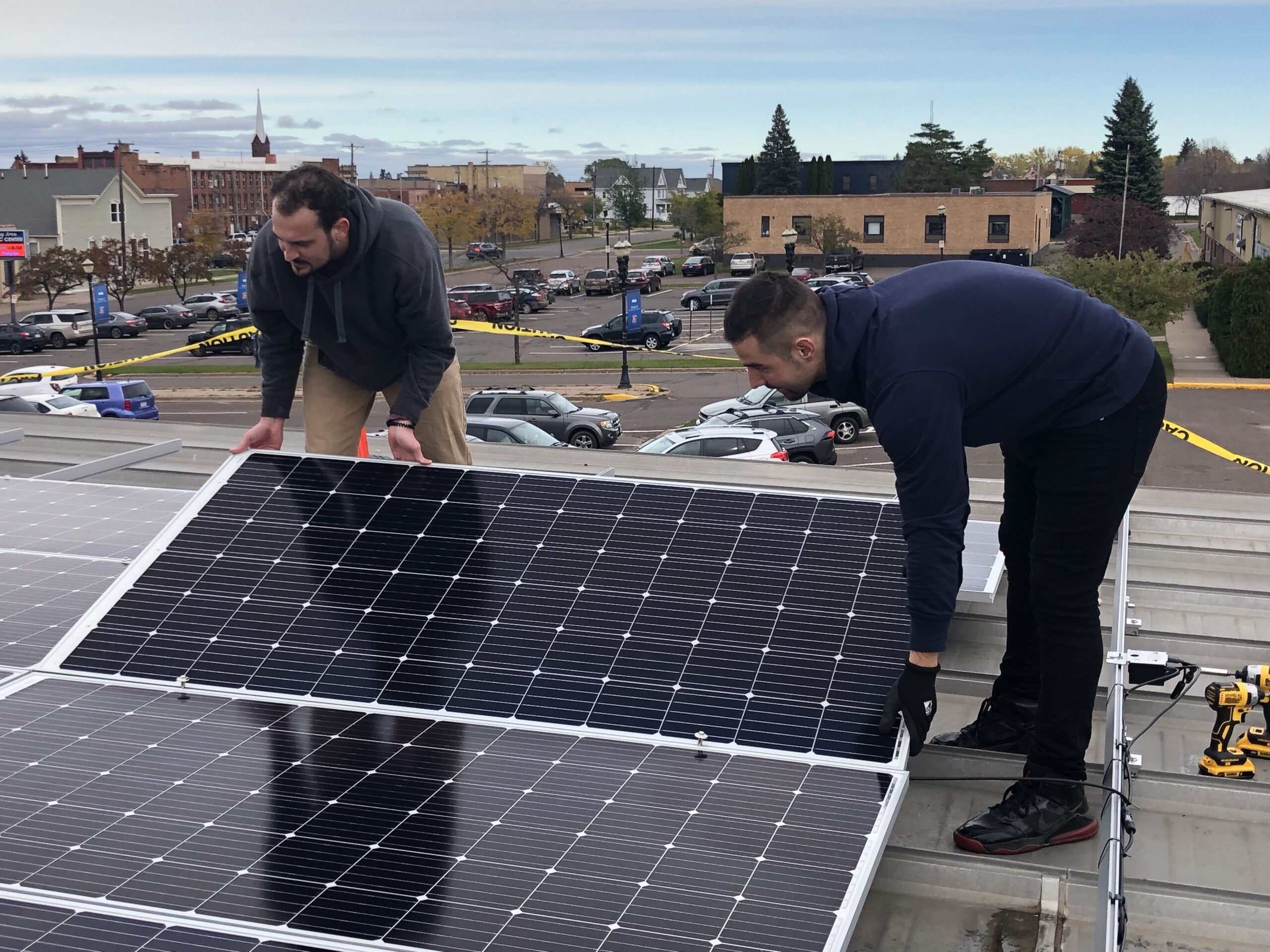
by RENEW Wisconsin | Dec 16, 2022 | Community, Local Initiatives, Press Release, Solar for Good
MADISON, WI – The Solar for Good grant program has awarded over $120,000 in grants and solar panel donations to Wisconsin nonprofit organizations. Thirteen nonprofits will install approximately 460 kilowatts of solar electricity, leading to more than $1.2 million in renewable energy investments in Wisconsin.
The following organizations have been offered Fall 2022 Solar for Good grants to install new solar energy systems:
Chequamegon Humane Association – animal shelter, Ashland
Cinnaire Solutions – affordable housing, Lac du Flambeau
Clyde Community Center – community service, Avoca
Friends of Sauk Prairie Parks & Recreation – community service, Prairie du Sac
Harry and Rose Samson Family JCC – religious, Mequon
Peace Lutheran of Pigeon Falls – religious, Pigeon Falls
People’s United Methodist Church – religious, Oregon
Racine Dominican Eco-Justice Center – community service, Racine
Rotary Club of Greater Portage County – community service, Stevens Point
Shirley M. Wright Memorial Library – community service, Trempealeau
St. Dunstan’s Episcopal Church – religious, Madison
WAFER Food Pantry – meal distribution, La Crosse
* One organization has asked to remain anonymous at this time.
The nonprofit grant recipients from the Fall 2022 round represent a wide range of organizations across Wisconsin. Cinnaire Solutions, an affordable housing provider, will install 100 kilowatts of solar at their Forest Edge development in Lac du Flambeau, which will directly provide energy to 40 low-income tenants. The Rotary Club of Portage County is working with students from Mid-State Technical College to install a 7-kilowatt solar system on top of the Salvation Army Hope Center in Stevens Point. And the Shirley M. Wright Memorial Library will install 60 solar panels at the public library in Trempealeau.
“The Solar for Good grant is a transformative addition to this project,” stated Elizabeth Rask of Cinnaire Solutions. “Solar infrastructure is rarely included in affordable housing developments due to cost. With Solar for Good’s support, we will be able to install photovoltaic infrastructure, which will reduce the cost to residents and ensure long-term sustainability.”
The main stipulation of the grant requires each organization to highlight its solar project in the community and educate its members about the benefits of renewable energy.
“This project is a true community collaboration involving the Rotary Club of Greater Portage County, the Salvation Army, Mid-State Technical College, the Community Foundation of Central Wisconsin, and the local community of professional solar installers,” said Ben Nusz of the Rotary Club of Portage County. “The completed installation will leave a lasting impact on an organization in great need.”
The 13 nonprofits are a part of Solar for Good’s 11th round of funding. The program has offered solar grants to 161 Wisconsin-based nonprofits since it began in 2017. When all projects are complete and energized, Solar for Good grant recipients will add over 7.6 megawatts of renewable energy to Wisconsin’s electric grid, providing enough electricity to power approximately 1,600 Wisconsin households.
###
About Solar for Good RENEW Wisconsin’s Solar for Good initiative fosters the expansion of solar power among mission-based nonprofits and houses of worship in Wisconsin. Through a generous partnership with Couillard Solar Foundation, RENEW Wisconsin awards grants and solar panels to nonprofit organizations, helping them switch to clean, renewable, solar energy.
About RENEW Wisconsin RENEW Wisconsin is a nonprofit organization that promotes renewable energy in Wisconsin. We work on policies and programs that support solar power, wind power, biogas, local hydropower, geothermal energy, and electric vehicles. www.renewwisconsin.org.
About Couillard Solar Foundation the Couillard Solar Foundation is a 501c3 nonprofit whose mission is to further the urgent path to decarbonization for Wisconsin and create a cleaner, safer environment for everyone, regardless of socio-economic status. The Couillard Solar Foundation helps schools and nonprofits gain vital access to solar power by providing solar panels, programs, and education through the Solar for Good and Solar on Schools grant programs. For more information, please visit www.CouillardSolarFoundation.org






